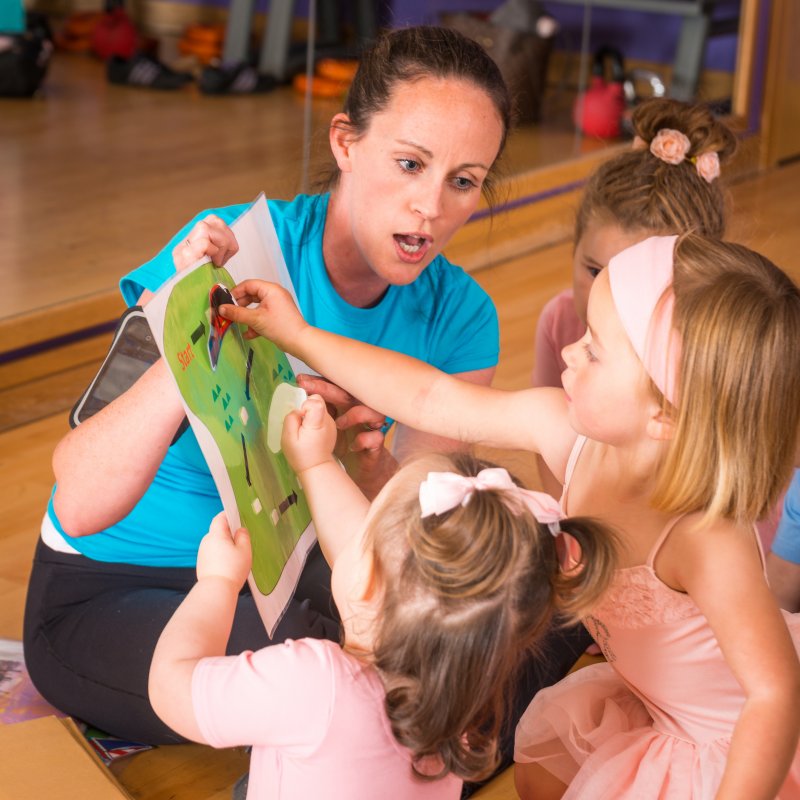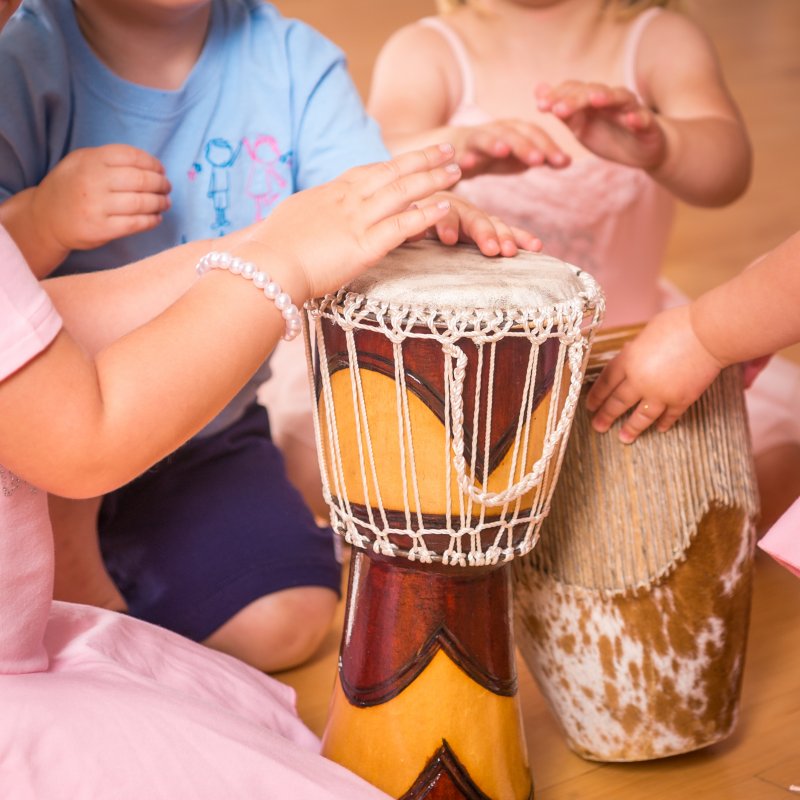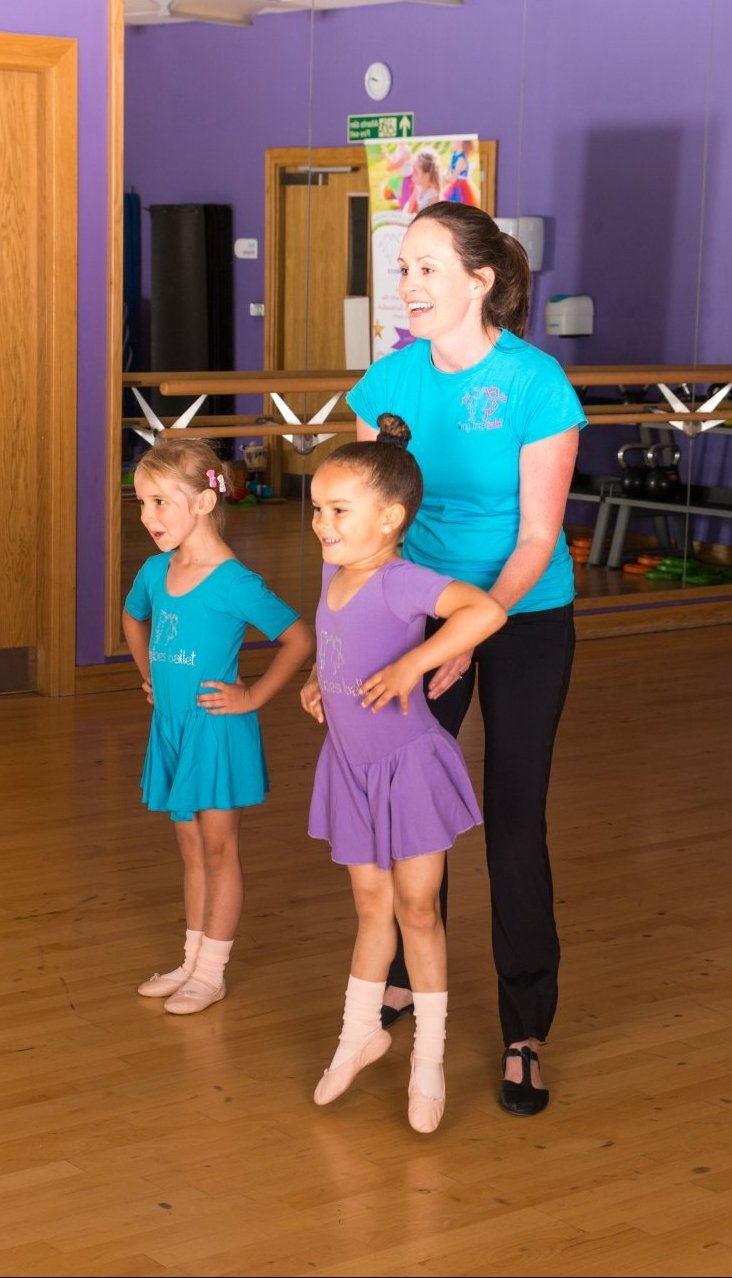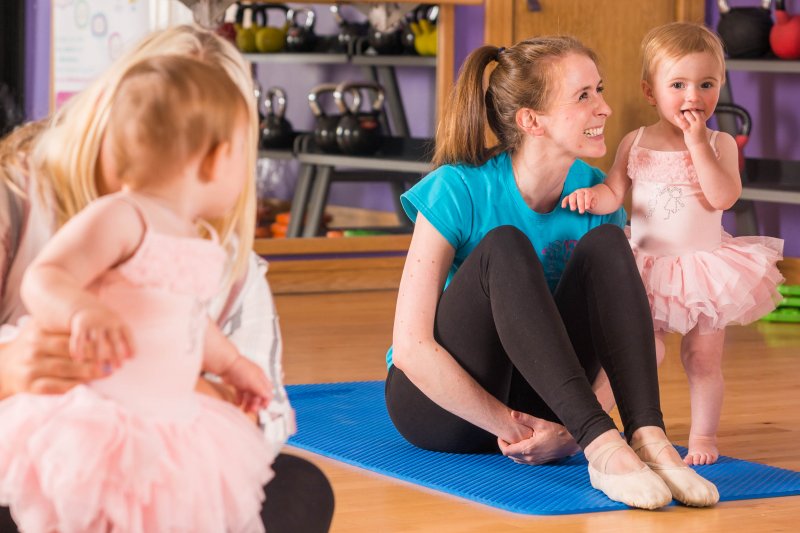At tiny toes ballet we think not. As babies, the very first thing we respond to is the rhythm of our mother’s heartbeat and the music of her voice.
By four months we can recognise facial expressions and begin to interpret emotions from these. Some 70% of human communication is non-verbal and at tiny toes we make use of that fact, using facial expressions, bodily movements and the universal language of mime.
From the age of six months right through to pre-school, children encounter the world through play and sound.
They can recognise songs and respond to them through movement from the age of six months. They can also pick up props and respond to a rhyme or song by rattling and banging. These are all forms of communication we make full use of in Tiny Toes classes.
Learning through play
Tiny Toes may be a dance class but it’s not all about demi plies. Because we understand how babies and young children learn to communicate, we incorporate stimulating activities such as sensory treasure boxes, based around themes that fit with the children’s lives outside the ballet class.
If we’re learning The Wheels on the Bus, for instance, our treasure boxes will include real, child-friendly objects relating to the world of travel. The children have the excitement of handling real objects, not disappointing plastic toys, and they learn to touch, manipulate and make noises with them.
We fill our classes with as many real sensations and activities as possible – no tapping an iPad here; instead, we might enjoy sandwiches for a teddy bears’ picnic or squish through foam as we go on a bear hunt. Our strapline is “learning through dance” but that also means learning through play – something that Einstein once called the highest form of research.
Expressive movement
Just as babies are born with the ability to express themselves through movement, so they are born with the ability to express themselves through sound. You can see their first gurgles as the beginning not only of speech, but also song, and as Tiny Toes teachers take their pupils through the tunes and patterns of favourite songs, they encourage them to use their voices and enter into the magical world of imagination and storytelling.
Tiny Toes’ founder Emma is not only a qualified dance teacher; she is also a former primary school teacher and used her knowledge of how children learn and develop to create the Tiny Toes curriculum. She also worked with a paediatrician to ensure the movements in the classes are suitable and helpful for young, growing bodies.
Skills for life
By learning through dance, children can develop spatial awareness and build the links between the left and right sides of the brain which are so important for poise and coordination. Dance can also make children more body-aware and can help those who struggle with language the opportunity to communicate without words.
We encourage the children to communicate freely through dance with their bodies and their faces and to express their ideas with confidence. Dance can also help children empathise with others and feel more comfortable in their own skin. It connects people through our shared humanity and makes children better able to read body language.
We also embrace the art of storytelling in our classes, working with adored tales like Sleeping Beauty, The Three Little Pigs and Snow White. These tales help children learn about story structure and sequencing, and we link the themes to current topics, seasonal themes and things from the children’s daily lives, such as food and transport.
Constant progress
The Tiny Toes programme is progressive, leading children upward through a spiral of lessons in which ideas and knowledge are constantly built upon. This structure means we can revisit key concepts again and again, with ever greater understanding.
The Tiny Toes programme also caters for various learning styles: whether your child responds well to kinesthetic, auditory or visual learning, the Tiny Toes curriculum will draw them in. It’s worth remembering, though, that children tend to learn best kinesthetically, which is why classes crammed with physical and sensory experiences can be so powerful. Dance is naturally kinaesthetic, and so it was natural to Emma to place this at the heart of her comprehensive curriculum.
Through dance, it is possible to teach so many different skills. Take literacy, for example, you can learn about a text through movement; dance can teach you how to structure a story, and you can learn the alphabet through making movements with your body.
Dance can also help with our children’s inner wellbeing: it can help them express themselves and get in touch with their emotions; it can make them feel happy, comfortable and secure; and it can give them an air of poise and balance that communicates confidence.
By teaching what we call physical literacy, we can set our children on the path to being physically active throughout their lives, setting them up for a healthy adulthood. So, no, a person is never too young to benefit from dance, just as a person is never too old.




